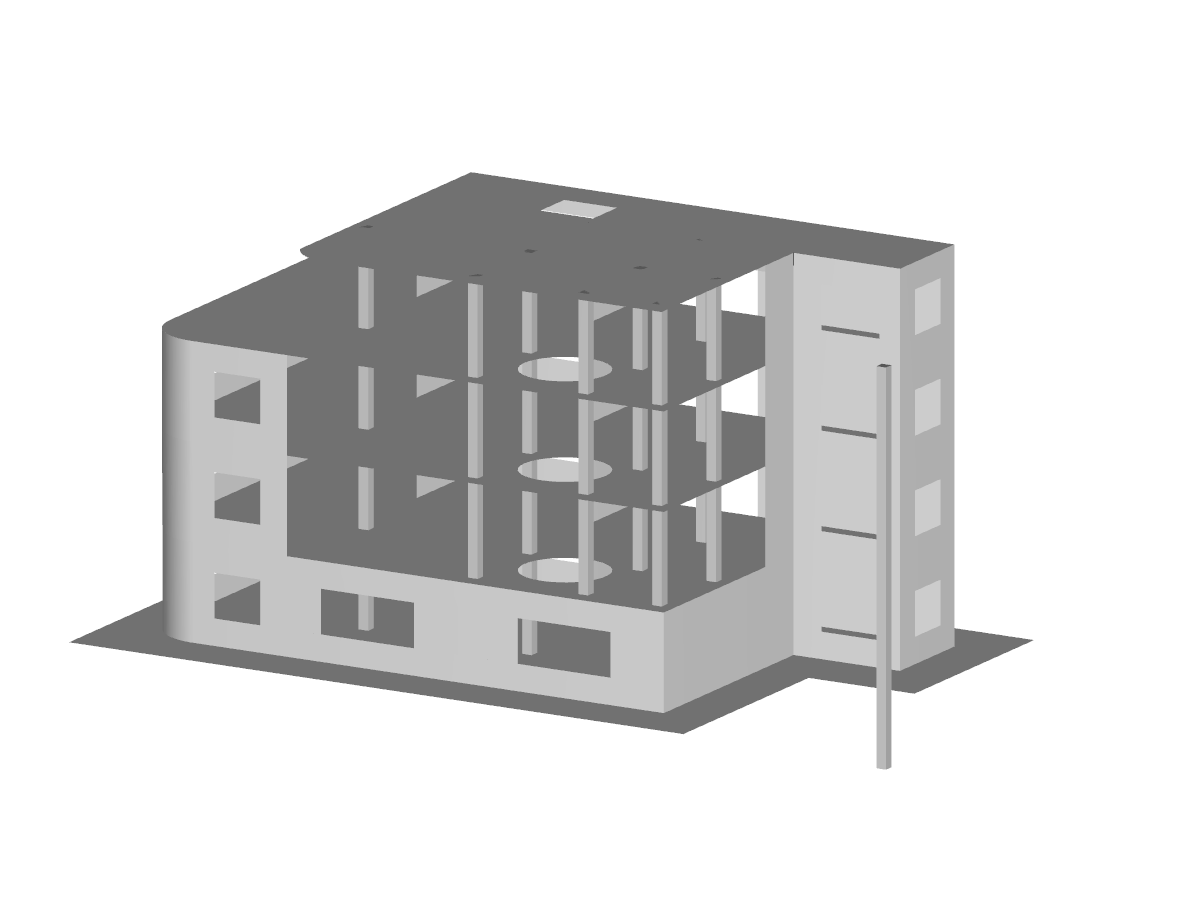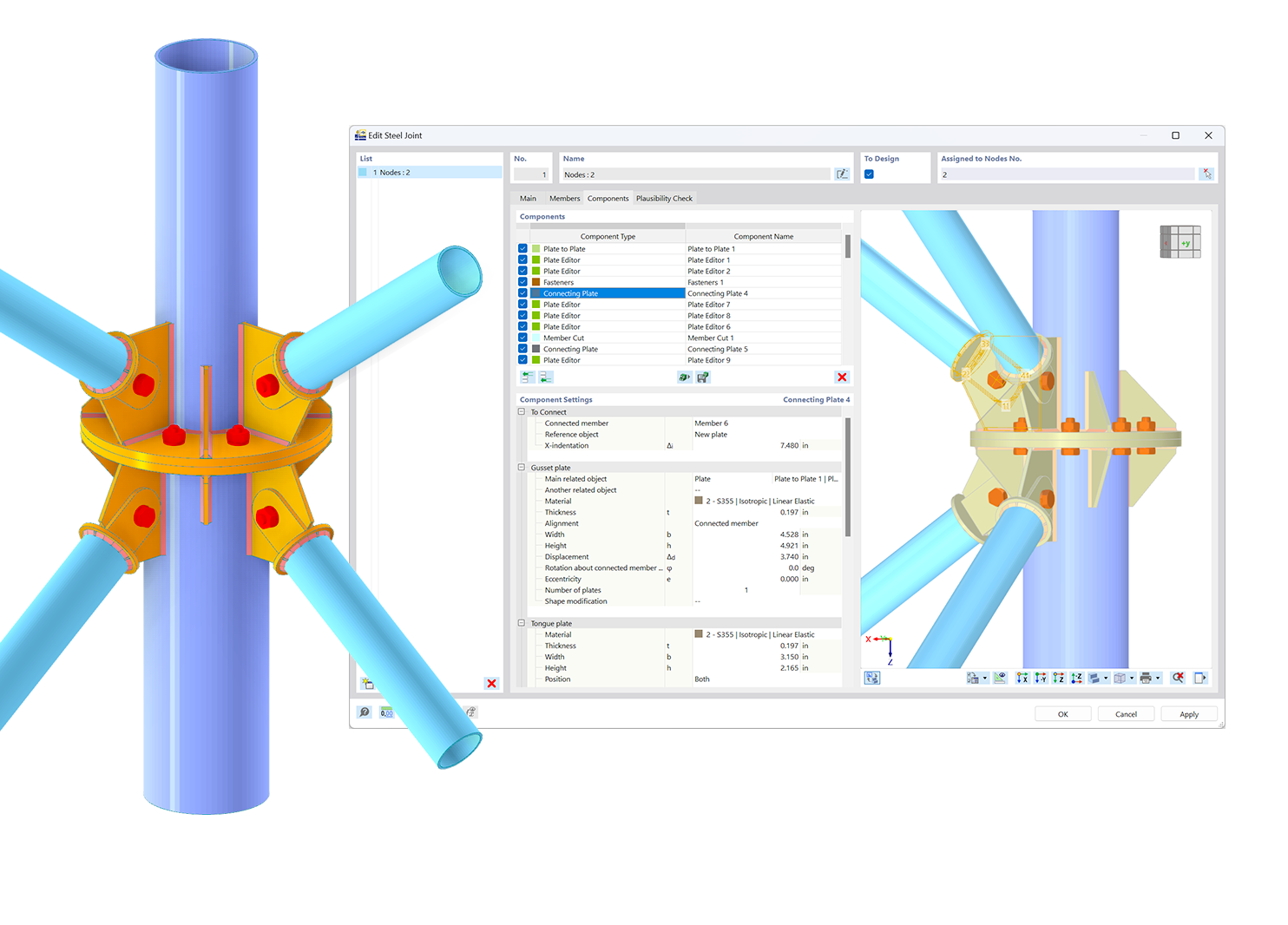地震分析的一般概念是基于为模态分析和反应谱分析创建荷载工况。 为了获得固有振动值,需要一个模态分析类型的荷载工况。
然后将该荷载工况导入到反应谱分析荷载工况中,在该工况中可以分配反应谱并选择感兴趣的振型。 详细的工作流程在“RFEM 6 中的地震分析”专题报告中进行了介绍。
假设已经根据反应谱方法进行了抗震设计,RFEM 6 提供了使用建筑模型模块来显示楼层作用、层间位移和剪力墙受力的选项。 这可以用于进一步的分析(例如用于 Pushover 分析的方向),或者在根据二阶理论的计算中考虑。
为此,需要在模型的基本数据中激活建筑模型模块,并定义建筑楼层。 本文中的示例是一栋六层建筑(图 1)。 楼层高度为每层4 m。 因此,如图2所示,创建第一个楼层并将其复制6次就足够了。
定义楼层后,可以按楼层显示谱分析的结果(图 3 至 5)。 首先,如图3所示,可以在表中列出通过地震计算得到的楼层作用。 同时显示重心坐标。 同样可以输入层间位移,如图4所示。
当按楼层显示结果时,程序会为每一层建筑上的每个剪力墙创建结果剖面(图 5)。 因此,结果表中会显示总力和单位长度的力。 这些数值可以直接用于分板剪力墙的验算。








..png?mw=320&hash=bd2e7071b02d74aef6228d22c4b83867d2d7e1a5)


































































.png?mw=600&hash=49b6a289915d28aa461360f7308b092631b1446e)